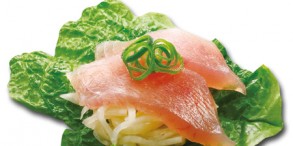Kiongs Threatening Natives Species in Japan
Are our readers familiar with an animal called Kiong? Or possibly Reeves's muntjac or Muntiacus reevesi? It's a deer-like animal widely found in southeastern China and in Taiwan. Kiong is originally Chinese as pronounced in Taiwanese.
Right now, Kiongs are threatening native species in southern tip of the Boso Peninsula self-feeding on rice, strawberries and other farm products in Boso and on Ashitaba in Oshima. In 2007 or thereabouts, a total of 3,400 Kiongs were confirmed present and by 2014 end they had multiplied over tenfolds to 47,000. The Chiba Prefectural Government now subsidizes local municipalities to capture them.
Lone Kiongs were first found loitering in the vicinity after a few had escaped from Namegawa Zoo (closed in 2001). A mild climate and abundant food must have prompted them to propagate.
The authorities proposed an eradication plan in the fiscal year 2008 but obviously with poor result. In 2012 a new plan was put into action but the total capture in 2014 was only 2,200. This year the authorities propose to subsidize half of the cost for capturing operations. Kiong is not a game animal according to the Wildlife Protection and Hunting Law and may only be trapped and not to be hunted.
Elsewhere in Oshima, an island 100km south of Tokyo, the islanders are now outnumbered by Kiongs - some 11,000 against the islanders 8,300 and still propagating. The island survives on a plant "Ashitaba" and, according to Tokyo Shinbum, a farmer Saburo Izumi, 84, is furious as his 40 acres of Ashitaba was eaten up by Kiongs. He had fenced part of his farms but the Kiongs easily jumped over them and ate what little he had. He has lost patience and decides to live on pension.
Kiong is originally from Taiwan, weighs 15 kg or so, brown, feeds on grass and leaves and propagates the year round.










